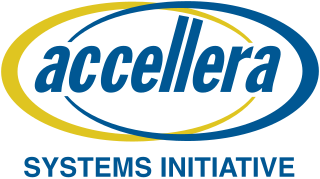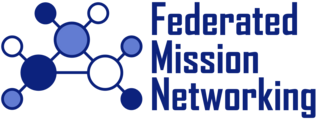
Interoperability is a characteristic of a product or system to work with other products or systems. While the term was initially defined for information technology or systems engineering services to allow for information exchange, a broader definition takes into account social, political, and organizational factors that impact system-to-system performance.
The Open Group is a global consortium that seeks to "enable the achievement of business objectives" by developing "open, vendor-neutral technology standards and certifications." It has 900+ member organizations and provides a number of services, including strategy, management, innovation and research, standards, certification, and test development. It was established in 1996 when X/Open merged with the Open Software Foundation.
The Organization for the Advancement of Structured Information Standards is a nonprofit consortium that works on the development, convergence, and adoption of projects - both open standards and open source - for Computer security, blockchain, Internet of things (IoT), emergency management, cloud computing, legal data exchange, energy, content technologies, and other areas.
An open standard is a standard that is openly accessible and usable by anyone. It is also a common prerequisite that open standards use an open license that provides for extensibility. Typically, anybody can participate in their development due to their inherently open nature. There is no single definition, and interpretations vary with usage. Examples of open standards include the GSM, 4G, and 5G standards that allow most modern mobile phones to work world-wide.
An open file format is a file format for storing digital data, defined by an openly published specification usually maintained by a standards organization, and which can be used and implemented by anyone. An open file format is licensed with an open license. For example, an open format can be implemented by both proprietary and free and open-source software, using the typical software licenses used by each. In contrast to open file formats, closed file formats are considered trade secrets.
The Web Services Interoperability Organization (WS-I) was an industry consortium created in 2002 and chartered to promote interoperability amongst the stack of web services specifications. WS-I did not define standards for web services; rather, it created guidelines and tests for interoperability. In July 2010, WS-I joined the OASIS, standardization consortium as a member section. It operated until December 2017. The WS-I standards were then maintained by relevant technical committees within OASIS.

Accellera Systems Initiative (Accellera) is a standards organization that supports a mix of user and vendor standards and open interfaces development in the area of electronic design automation (EDA) and integrated circuit (IC) design and manufacturing. It is less constrained than the Institute of Electrical and Electronics Engineers (IEEE) and is therefore the starting place for many standards. Once mature and adopted by the broader community, the standards are usually transferred to the IEEE.
Enterprise application integration (EAI) is the use of software and computer systems' architectural principles to integrate a set of enterprise computer applications.
The Schools Interoperability Framework, Systems Interoperability Framework (UK), or SIF, is a data-sharing open specification for academic institutions from kindergarten through workforce. This specification is being used primarily in the United States, Canada, the UK, Australia, and New Zealand; however, it is increasingly being implemented in India, and elsewhere.
The Optical Internetworking Forum (OIF) is a prominent non-profit consortium that was founded in 1998. It promotes the development and deployment of interoperable computer networking products and services through implementation agreements (IAs) for optical networking products and component technologies including SerDes devices.
Fieldbus Foundation was an organization dedicated to a single international, interoperable fieldbus standard. It was established in September 1994 by a merger of WorldFIP North America and the Interoperable Systems Project (ISP). Fieldbus Foundation was a not-for-profit trade consortium that consisted of more than 350 of the world's suppliers and end users of process control and manufacturing automation products. Working together those companies made contributions to the IEC/ISA/FDI and other fieldbus standards development.
Communications servers are open, standards-based computing systems that operate as a carrier-grade common platform for a wide range of communications applications and allow equipment providers to add value at many levels of the system architecture.
Service Component Architecture (SCA) is a software technology designed to provide a model for applications that follow service-oriented architecture principles. The technology, created by major software vendors, including IBM, Oracle Corporation and TIBCO Software, encompasses a wide range of technologies and as such is specified in independent specifications to maintain programming language and application environment neutrality. Many times it uses an enterprise service bus (ESB).
govdex is an Australian government initiative designed to facilitate business process collaboration across policy portfolios, administrative jurisdictions and agencies. The service is designed to promote effective and efficient information sharing, providing governance, tools, methods and re-usable technical components across Australian government.
Association for Standardization of Automation and Measuring Systems or ASAM is an incorporated association under German law. Its members are primarily international car manufacturers, suppliers and engineering service providers from the automotive industry. The association coordinates the development of technical standards, which are developed by working groups composed of experts from its member companies. ASAM pursues the vision that the tools of a development process chain can be freely interconnected and allow a seamless exchange of data. The standards define protocols, data models, file formats and application programming interfaces (APIs) for the use in the development and testing of automotive electronic control units. A large amount of popular tools in the areas of simulation, measurement, calibration and test automation are compliant to ASAM standards. Compliance shall guarantee interoperability of tools from different vendors, allow data exchange without the need for converters, and facilitate the exchange of unambiguous specification between customers and suppliers.
This article documents the effort of the Health Level Seven(HL7) community and specifically the former HL7 Architecture Board (ArB) to develop an interoperability framework that would support services, messages, and Clinical Document Architecture(CDA) ISO 10871.
The Security Industry Association (SIA), based in Silver Spring, Maryland, is a U.S. trade association, founded in 1969, representing global security solutions providers. The organization today represents nearly 1,400 firms and organizations in the security industry, and in 2017 the association expanded membership to include an academic category.

The Open Geospatial Consortium (OGC), an international voluntary consensus standards organization for geospatial content and location-based services, sensor web and Internet of Things, GIS data processing and data sharing. It originated in 1994 and involves more than 500 commercial, governmental, nonprofit and research organizations in a consensus process encouraging development and implementation of open standards.
Health Level Seven International (HL7) is a non-profit ANSI-accredited standards development organization that develops standards that provide for global health data interoperability.

Federated Mission Networking (FMN) is a significant initiative to help ensure the interoperability and operational effectiveness of the North Atlantic Treaty Organization. It is a key contribution to the Connected Forces Initiative, helping Allied and Partner forces to better communicate, train, and operate together. This includes the NATO Command Structure as well as the NATO Force Structure. The purpose of FMN is ultimately to support Command, Control, Communications, Computers, Intelligence, Surveillance and Reconnaissance (C4ISR) and decision-making in operations by enabling the rapid instantiation of mission networks. Including the NATO Command Structure, 37 nations have joined the FMN initiative as so-called "FMN Affiliates" and work together under the FMN Framework Process to coordinate the design, development, and delivery of operational and technical capabilities required to conduct net-centric operations. Each development increment is referred to as an "FMN Spiral.". The respective requirements, architecture, standards, procedures, and technical instructions are documented in the so-called "FMN Spiral Specifications.". FMN Spiral Specifications are based on well-known standards and best practices, hence supported by most off-the-shelf products and vendor neutral. TACOMS standards and profiles specify a common, technology- and topology independent network interoperability layer for federated mission networks. There is also a rolling 10-year FMN Spiral Specification Roadmap of the envisioned future capabilities. At the same time, the Coalition Interoperability Assurance and Validation (CIAV) process ensures that current interoperability issues are being identified and fed back into FMN capability development.



